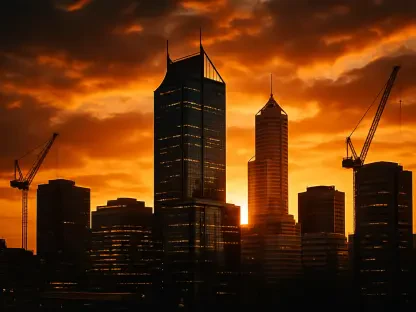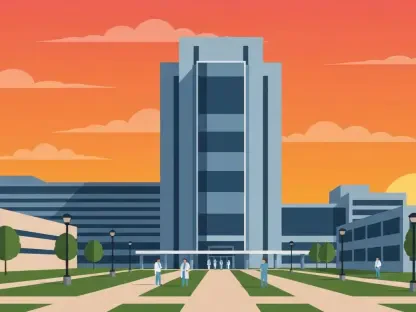Nestled in the scenic backdrop of Massachusetts, the town of Adams has long dreamed of turning its picturesque landscapes into a nexus of eco-tourism and sustainable living. The recently completed Outdoor Center at Greylock Glen could be the turning point in this endeavor, providing a shining example of green architecture with its commitment to a net-zero carbon footprint. Built with a keen eye on environmental consciousness, this $9 million structure employs solar panels and laminated wood—a choice material known for its ability to sequester carbon, unlike concrete or steel. This approach not only promises to enhance the town’s ecological credentials but also supports its aim to achieve economic resurgence through environmentally friendly means.
Overcoming Historical Development Challenges
Lessons from Past Failures
Over the past half-century, various grandiose projects were proposed to transform the Glen—each faltering before realization. Ideas for a ski area, golf course, and even a casino populated ambitious plans but never came to fruition, leaving behind a blend of physical residues and community skepticism. Against such a backdrop, the town’s initiative 18 years ago marked a strategic pivot toward sustainable development. By focusing on the delicate balance between economic gain and environmental stewardship, Adams hoped to chart a new course, which might just prove successful with the recent completion of the Outdoor Center.
The rich tapestry of experiences informs current strategies, steering clear of pitfalls that plagued predecessors’ efforts. Learning from these dialogues of failures, modern Alex Scorsese—the municipal planner—reinforced trust between stakeholders and convinced skeptics through open consultations and fostering transparent communication. Such practices, pairing community engagement with an innovative vision, distinguish the present initiatives from past undertakings marred by discord and short-sightedness.
Current Developments and Architectural Innovations
The cornerstone of the town’s ecological aspirations, the Outdoor Center, offers more than visual allure. Architect William Maclay ingeniously mirrored Mount Greylock’s ridge in the building’s roofline. This design not only aesthetically aligns with the natural landscape but also furthers green objectives through thoughtful integration of sustainable materials and energy-efficient features. Such planning marks a broader trend emphasizing environmental harmony and resilience, creating spaces serving both the community and nature.
As the architectural narrative unfolds, it also acknowledges setbacks encountered along the way. Challenges remain with plans yet unfulfilled, including campsites, lodges, conference centers, and amphitheaters. Despite these hurdles, the Outdoor Center symbolizes a beacon of potential for renewed engagement and economic vigor, beckoning tourism through outdoor recreation and sustainable design. It serves as a testament to green architecture’s capacity to play a pivotal role in crafting sustainable futures.
Eco-Tourism’s Role in Revitalization
Impact on Local Economy
The impetus behind eco-tourism lies in its dual ability to advance conservation goals while fostering economic benefits. The town of Adams recognizes this synergy, channeling efforts into projects like the Outdoor Center, which not only complements the existing trail system but also augments the region’s allure for nature enthusiasts. This move fits within a broader strategy aimed at creating economic stimuli sourced from outdoor leisure activities driven by eco-conscious travelers.
For local businesses, this means burgeoning opportunities. Increased foot traffic hints at potential growth, fueling optimism among small enterprises eyeing expansion and inviting new ventures. The promising ripple effects extend beyond immediate economic parameters, resonating with regional aspirations to achieve sustainable progress across diverse sectors.
Sustainability and Community Empowerment
Nestled within the scenic environs of Massachusetts, Adams is a town where dreams of cultivating eco-tourism and sustainable living have flourished. These aspirations find new hope with the inauguration of the Outdoor Center at Greylock Glen, which could very well serve as a catalyst for reaching these ambitious goals. This center stands as a testament to green architecture, boasting a promise of a net-zero carbon footprint. The $9 million facility is constructed with solar panels and makes extensive use of laminated wood—a material celebrated for its carbon sequestration capabilities, unlike the less eco-friendly concrete and steel alternatives. This thoughtful selection of materials highlights Adams’ dedication to environmental stewardship, marking a significant stride in boosting the town’s ecological clout. Moreover, this initiative is poised to spark economic revitalization for Adams, leveraging sustainable strategies and environmental consciousness as cornerstones for growth.









